Catalogue > Faire une recherche
Résultats pour : Tout le catalogue
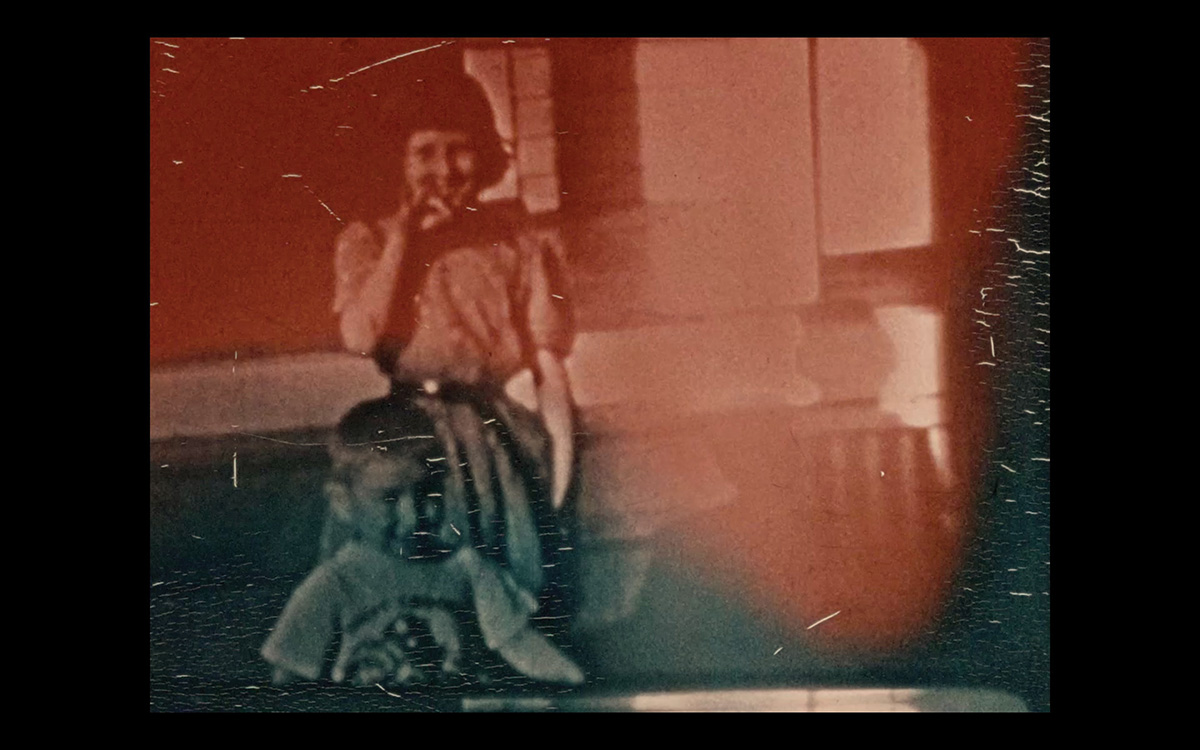

Louise Bourque
Bye Bye Now
Film expérimental | 16mm | couleur | 8:27 | Canada | 2022
Saluant de la main le caméraman, les sujets offrent d’une certaine façon au prochain spectateur la reconnaissance d’un au revoir, à un moment fugace, qui se renouvelle. Pourtant, quand le film est projeté et que le geste saisi est vu, c’est comme si ces sujets nous saluaient, depuis le passé, dans le moment présent de la projection. Ce film est un hommage à l’homme derrière la caméra, celui qui a constitué ces archives familiales personnelles : le père de l’artiste, qui lui a laissé, au-delà de la mort, cet héritage fait de traces de vies passées.
Après un exil de 30 ans aux États-Unis et ailleurs, la cinéaste Louise Bourque est récemment revenue s’établir à Montréal. Ses films ont été projetés dans une cinquantaine de pays et diffusés sur les ondes de PBS et de Sundance Channel aux États-Unis, ainsi qu’à Télé-Québec au Canada et SBS en Australie. Son œuvre a été présentée dans des musées prestigieux et des galeries dans le monde entier, notamment au Musée de la Civilisation et au Musée national des beaux-arts du Québec à Québec, à la National Gallery of Art à Washington, au Museum of Modern Art et au Whitney Museum of American Art à New York.
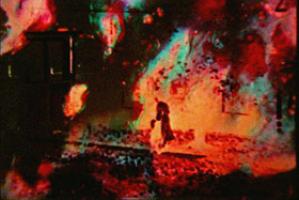

Louise Bourque
L?éclat du mal
Film expérimental | 16mm | couleur | 8:0 | Canada | 2005
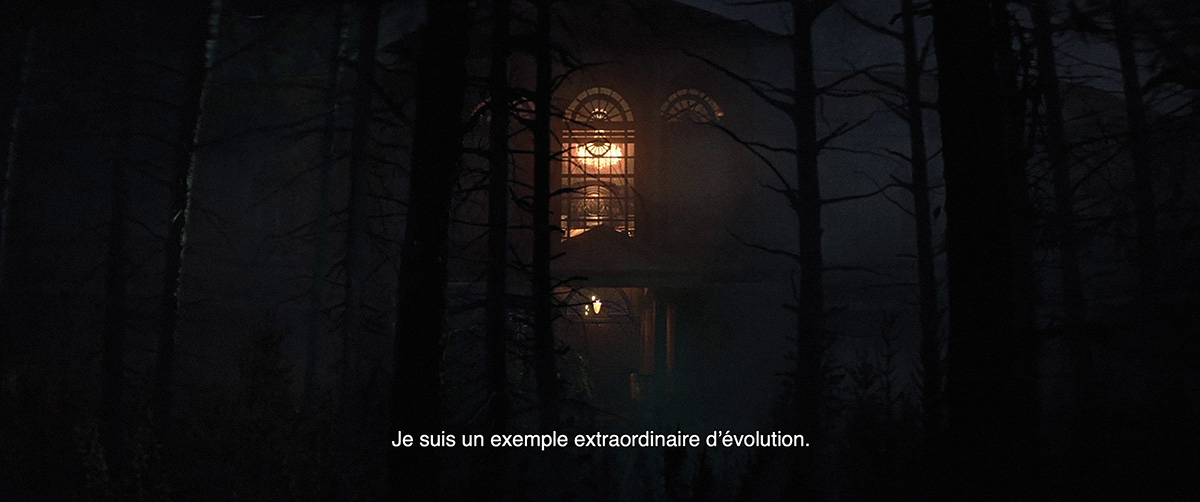

Nelson Bourrec Carter
It's Coming from Inside the House
Fiction expérimentale | mp4 | couleur | 10:45 | France | 2022
A seemingly disembodied voice reflects on what it takes to survive, in a world modeled after a perception of reality far from what the one it experiences on a daily basis.
Nelson Bourrec Carter is a French-American filmmaker and visual artist. His practice combines photography, film, installation and performance while his research revolve around the links woven between real territories and fantasized landscapes, whether they be urban, peri-urban, or rural, influenced by the weight of popular imagery. His work focuses mainly on the influence of American iconography on identity construction and racial awareness, and operates from places whose hybridity, history or architecture lend themselves to a new interpretation. He demonstrates that these visual tropes are more interconnected than they appear and that they articulate questions of gender, race, and class, while raising the issue of which bodies - whether they are embodied or inscribed in a ghostlike manner within the architecture - occupy the spaces of representation in the American cultural economy. Nelson’s films have been shown in festivals such as New Directors/New Films, Entrevues Belfort, Vila do Conde or within institutions like the Cinémathèque Française or the Jeu de Paume.

Gast Bouschet, Nadine HILBERT. Collaboration: Stephen O'MALLEY
Tempestarii
Vidéo | hdv | noir et blanc | 38:25 | Luxembourg | 2013
Dawn spreads its luminous rays across the coast of Iceland, revealing a sorcerer standing between wine-dark sea and mountainous black rock. It is Tempestarii, a figure of medieval lore, undertaking a primitive rite manifested to conjure a storm. The tides of the deep ocean breathe heavily, rising and falling across the cinema screen with amplifying power as the weather-maker beats a mysterious sack against the monolithic cliffs with powerful repetition. As a magical tool, this sack contains forceful winds pulled from each corner of world. As an analogy, it is aligned with the revolutionary transformations of nature by water, air, solar radiation, and geological shifts and filled with the vast potential of man’s will in alliance with Nature. As an omen, the tempestarii signals profound change in both physical and metaphysical realms. (Amelia Ishmael)
Gast Bouschet & Nadine Hilbert were both born in Luxembourg and are currently based in Brussels, Belgium. They have worked together since 1990s, using a combination of photography, video, and sound to create potent social, political, and institutional critiques which they have exhibited at major international venues including The Wall Taipei, Taiwan; Cube Space Taipei, Taiwan; Philharmonie, Luxembourg; Muzeum Sztuki Lodz, Poland; Casino Forum d`Art Contemporain, Luxembourg; Trienal de Luanda, Angola; Busan Biennale of Contemporary Art, South-Korea; Camouflage Johannesburg, South Africa; MUHKA Antwerp Belgium, CCA Glasgow, Scotland among others. Gast Bouschet & Nadine Hilbert represented Luxembourg at the Venice Biennale in 2009.
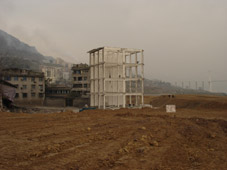

Antoine Boutet
Zone of Initial Dilution
Doc. expérimental | dv | couleur | 30:0 | France, Chine | 2006
"Zone of Initial Dilution" s?intéresse à la transformation urbaine de la région des Trois-Gorges en Chine bouleversée par la mise en oeuvre du plus grand barrage hydraulique au monde. Avant la fin du chantier prévu en 2008, la vidéo dresse un état des lieux des villes et des berges du Yangtze, de celles en ruines ou disparues aux autres en plein essor, et tente de cerner les conséquences sur le paysage et les populations dans la perspective planifiée de l?ultime montée des eaux.
Antoine Boutet est né en 1968. Diplômé de l`Ecole des Beaux-Arts de Pau et de l`Ecole Supérieure des Arts Décoratifs de Paris, il réalise des bandes vidéo expérimentales et documentaires et des installations exposées en France et à l`étranger, dont Conservation-conversation, en 2005. Antoine Boutet vit et travaille actuellement à Paris.
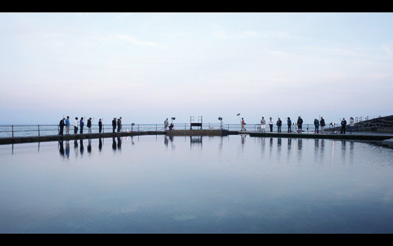
Tim Bowditch
Firedive
Doc. expérimental | hdv | couleur | 13:9 | Royaume-Uni | 2010
Firedive is a short documentary about La Vallette Bathing Pools on the east coast of the Island of Guernsey. The film describes the Island`s collective memory of the tidal pools, focusing on the floodlit swimming galas and `firedives` that once made the pools a central part of the local community. Bowditch?s mother relayed the almost mythical personal tales of her childhood, which inspired the film. Contributors include locals who all have their own complimentary and contrasting tales adding to the visual portrait presented of the pools. The narrators talk about the decline in usage of the pools before going on to describe the ritualistic ceremony of the torch light processions and ?firedives? that once took place. The film is not a recreation of events but rather documents Bowditch?s own experience and involvement in adding to the collective memory of the location. By staging a floodlit torchlight procession based on the tales and accounts of the inhabitants he adds to the islands history and represents it for a new generation. Production dialogue, filming equipment and crew are therefore included in the edit, showing it was an exploration based on intertwined memories rather than a factual straight re-enactment.
Tim Bowditch (b.1986 Guernsey, Channel Islands) graduated from the University of Portsmouth in 2008 with a BA Hons Degree is Photography. Bowditch moved from his childhood home of Guernsey to begin a career as a photographer in London in the Autmn of 2008. He has kept his ties with Guernsey by annually applying and receiving funding to make new work incorporating the Island in someway. The last two years have been spent working on a project entitled Firedive (submitted as a multimedia piece). Firedive saw Bowditch follow the current trend of the digital SLR film makers to shoot a short documentary about the about La Vallette Bathing Pools on the east coast of the Island. The film describes the Island`s collective memory of the pools, focusing on the floodlit swimming galas and `firedives` that once made the pools a central part of the local community. This year the film was premiered at a special open air screening at the pools accompanied by a swimming gala and torch light procession. Three Artists were invited to the Island to make work in response to the screening and gala. The third phase of the project is a proposed exhibition at the greenhouse gallery in Guernsey next Spring. I will curate an exhibition from the work made at the screening.
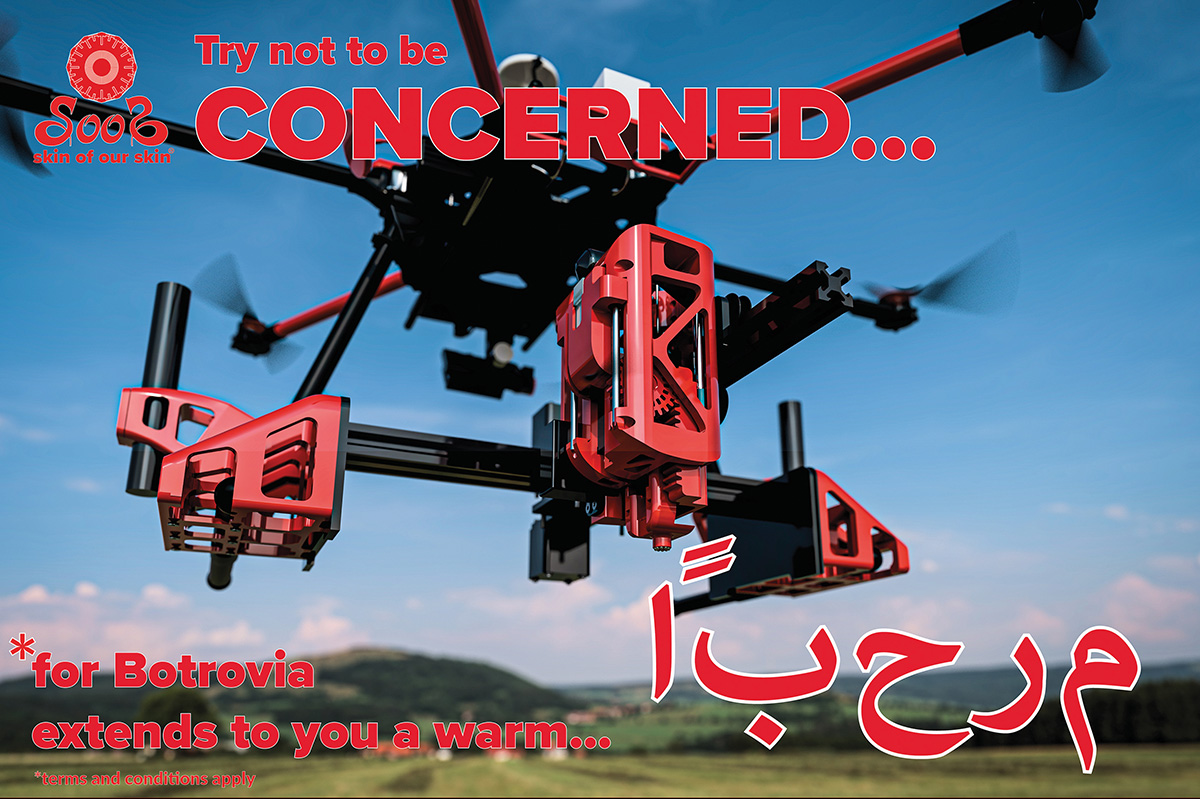

Ric Bower, Supercharger-blown collective
Easy Asylum Booth 'Bundu Edition'
Installation multimédia | 4k | | 0:0 | Royaume-Uni | 2023
Supercharger-blown collective offers ‘Easy Asylum Booth ‘Bundu Edition’’, a satirical and situation specific, modular presentation which interrogates European asylum policies, (and attitudes to immigration as a whole) by inverting hegemonic narratives. The collective uses provocative spectacle as a vehicle to facilitate social engagement, partying, shisha smoking, music and political dialogue. Easy Asylum Booth ‘Bundu Edition’ is another chapter in the shifting, magical-real vision derived from the fictitious nation of Botrovia. The booth is a ‘pop up embassy’ offering instant refugee status to anyone seeking asylum in Botrovia. Applicants just need to demonstrate their loyalty by offering 7 x 7cm of their skin for a tattoo specially chosen for them by Skin of our Skin (SooS®), the Botrovian Ministry of Immigration and executed by a flying robotic tattoo gun. Benefits to refugee status include a direct telephone connection with the Botrovian Leader (‘Our Leader is Available’); Training in ‘DASHT (Drone Asylum Seeker Herding Techniques)’ with a fully featured computer game; a lifetime subscription to ‘Botrovian Seeker (Your Guide to Asylum Success)’ plus access to numerous helpful and supportive infographics, interviews and seminars. The project and multicultural collective are formally partnered with Oasis Cardiff, an asylum seeker and refugee charity.
Supercharger-blown collective is a group of artists, scientists and thinkers from a range of cultural backgrounds. Formed and led by the artist Ric Bower their knowingly complex, multi-disciplinary practice often assumes the appearance of an elaborate practical joke and usually explores issues relating to European asylum policy through magical-real narratives. Supercharger-blown collective’s influences include the magical-realism of Murakami and Bulgakov: the satirical illustrator Heath Robinson and the 19th century history painter Thomas Cole. Bower says of Supercharger-blown collective’s approach: ‘...we do not want to make work that sits quietly, meekly waiting to be observed. We mean to make madness that follows you out of the gallery space, slithers into the back seat behind you and shanks you as you drive home.’


Bryan Boyce
America's Biggest Dick
Vidéo expérimentale | dv | couleur et n&b | 4:0 | USA | 2004
Le vice-président des Etats-Unis Dick Cheney dit enfin la vérité.
L'indien de San Francisco Bryon Boyce est un réalisateur-vidéaste dont les oeuvres ont parcouru le monde entier mais aussi dans des lieux tels que le Sundance, NY Underground, Cinematexas, RESfest, MTV et le Pacific Film Archive.

Velibor Bozovic
My Prisoner
Vidéo | hdv | couleur | 21:41 | Canada, Bosnie-Herzégovine | 2014
My Prisoner is a video work that reconstructs the event that occurred on 3 April 1994 in war-torn Bosnia by intermixing archival footage with contemporary reimagining of the occasion. It shows a young man being escorted by an army intelligence officer to visit his imprisoned father. As the men travel side-by-side in the back seat of a car Shine on You Crazy Diamond by Pink Floyd begins to play on the car radio. The young man acknowledges the music and tries to make conversation but the officer does not even recognize the track. A composite of autobiography, documentary and fiction, My Prisoner navigates through the space where the historical, the personal and the fictional simultaneously interfere with and enhance one another.
Velibor Božović grew up in Sarajevo, Bosnia-Herzegovina. When he was in his twenties, the country of his youth became a war zone and he spent the duration of the siege of Sarajevo honing his survival skills. In 1999, Velibor moved to Montréal where he worked, for eight years, as an engineer in aerospace industry until he gave up his engineering career to devote his time fully to art practice. Subsequently, Velibor completed a Master of Fine Arts degree in Studio Arts at Concordia University. He is the recipient of the Claudine and Stephen Bronfman Fellowship in Contemporary Art (2015), Concordia International Mobility Award (2014), the Bourse de Maîtrise en Recherche from FRQSC - Fonds de recherche sur la société et la culture Quebec (2012) and Roloff Beny Foundation Fellowship in Photography (2011). His work has been exhibited in the United States, Cuba, Canada, and Bosnia-Herzegovina. His images appeared in The New York Times, The Paris Review, Descant, International Herald Tribune, Chicago Tribune, Granta, BH Dani and others.

Tomas Bozzato
Avant l'horizon
Documentaire | betaSP | couleur | 61:0 | Italie, France | 2010

Igor Bošnjak
Hotel Balkan
Film expérimental | | couleur | 10:25 | Bosnie-Herzégovine | 2013
?It is not the literal past that rules us, it is images of the past...? George Steiner Hotel Balkan is meditative and ambiental video which defines borders between futuristic memory of past and present thinking of future. I?ve been wondering about something: Why is it that images from the past - the actual past - often feel more futuristic than our current images of an imagined future? But if the future doesn?t look much like the future, the past often does. There are pictures from the past that, while you immediately recognize them as being from the past, nevertheless feel futuristic. It?s as though there?s something in your brain that wants to read them as images from the future. In this concept there is an idea that Tito?s nuclear bunker is equivavelnt for some kind of motel, or maybe even a hotel. Nowadays, Tito?s nuclear bunker wants sunshine instead of fluorescent lights, the sound of wind blowing through trees instead of the dull noise of its massive air-conditioning unit. It looks forward to the chatter of people and the sound of their footsteps instead of the noise produced by the closing of its steel antinuclear doors.
Born 1981 in Sarajevo, former Yugoslavia. Lives & work in Trebinje, Bosnia & Herzegovina. He is mainly working within the fields of film, video, concept, installation & photography. Also works as a video curator & freelance theoretician. Curently works as a asistant professor at Academy of Visual Arts in Trebinje. Education 2005 Academy of Visual Arts (BA) in Trebinje, Department of Painting 2006 Founder and the curator of the international namaTREba project biennial 2008 Interdisciplinary master (MA) studies at the University of Arts in Belgrade, Theory of Art & Media Department 2011 Interdisciplinary (PhD) studies at the University of Arts in Belgrade / Theory of Art & Media Department His works shows and exhibited at Kunsthal Charlottenborg, Copenhagen, Moscow Museum of Modern Art, Moscow, Atopia Film & VideoKunst Gallery, Oslo, CAM Casoria, Contemporary Art Museum, Naples, Kunst Museum, Bonn, Galleria d? Arte Moderna Palazzo Forti, Verona, Museum of Contemporary Art RS, Banja Luka, Point Ephemere, Paris, Contemporary Music Centre, Dublin, Espacio Center Canarias, Tenerife, Fabbrica del Vapore, Milan, Center of Contemporary Art, Plovdiv, Budapest Art Fair Mucsarnok, Budapest, Spazio Monitor, Museum of Contemporary Art, Rome, Tapetenwerk Halle C, Leipzig, A+A Galerie, Art Verona, Venice, Gallery Remont, Belgrade... more info: www.igorbosnjak.com
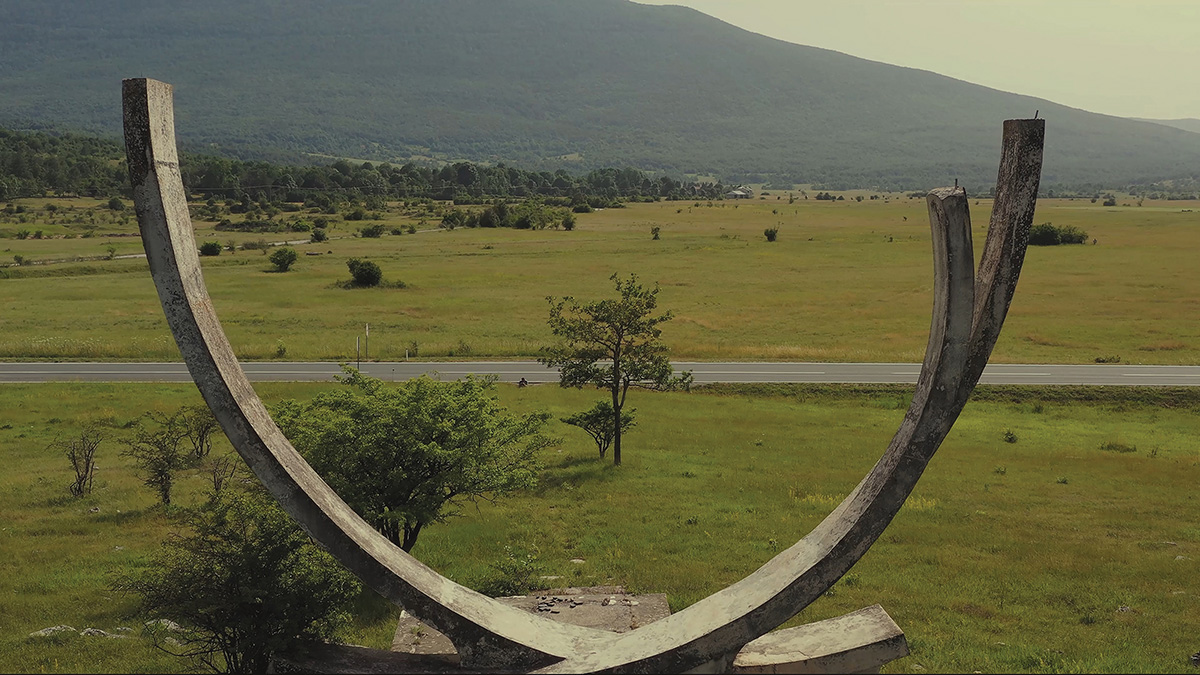

Igor Bošnjak
Memory Gate
Film expérimental | 4k | couleur | 8:39 | Bosnie-Herzégovine | 2023
Memory Gate shows desolated Herzegovinian landscape with a forgotten monument dedicated to pilots of Yugoslav National Army during the Second World War. Critical deserted landscape followed by weird sound and music called ganga* which is typical for that region of the south part of Bosnia and Herzegovina. This video confronts utopian modernistic Yugoslavian architecture with a traditional sound and landscape, creating a very disturbing and eerie cinematic experience. *Ganga - stands for old traditional folk music and singing which is usually played by a group of old men.
Igor Bošnjak (b. 1981 in Sarajevo, Yugoslavia) lives and works in Trebinje (Bosnia & Herzegovina). As an interdisciplinary artist, he works on visual, cinematical, geographical and documentary research addressing archives, maps, migrations, monuments, history and image-time relations as key refference in the experience of contemporary society. He is mainly working within the media fields of contemporary art: moving images, video, 3d animation, installation, objects, drawing & photography. In 2005 he finished Academy of Visual Arts (BA) in Trebinje, Department of Painting. From 2007 to 2008 he finished (MA) Interdisciplinary studies, Theory of Art & Media Department at the University of Arts in Belgrade, Serbia. From 2006 to 2016 he was founder and curator of namaTRE.ba project biennial. From 2009 works as a professor at Academy of Visual Arts in Trebinje, University of East Sarajevo on courses of Intermedia art, Video art, Digital art. From 2019 to 2021 he was working as visiting lecturer on Faculty of Fine Arts, Cetinje, University of Montenegro.
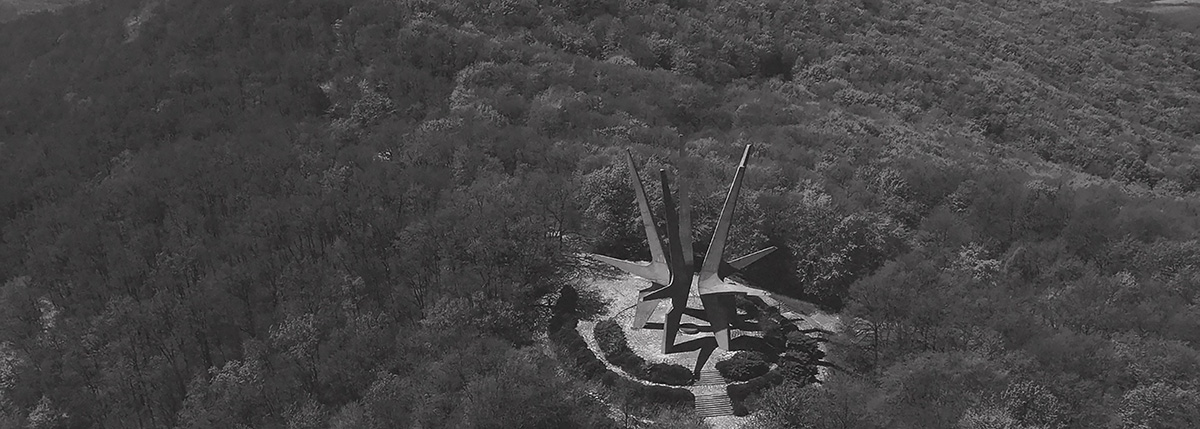
Igor Bošnjak
Future Repeats Itslef More Than History Used To
Fiction expérimentale | 4k | noir et blanc | 13:49 | Bosnie-Herzégovine | 2020
An attempt on aesthetic-technological-ideological objectivity in non-objective reality. How can we see today, the monuments of the NOB (National Liberation War), what they represent to us in the context of the new division of fashion as well as changes in paradigm and ideology in the former Yugoslavia. Is a new reading possible without a nostalgic undertone? How to think about architectural and concrete structures in the 2000s? What is the relationship between monument and human, what is the relationship between monument and unbridled nature. What is the relationship between monuments and contemporary technology and contemporary art today? How much contemporary and how much tech addiction? How to reinterpret the artifacts of the anti-fascist struggle, but so that the monument of the NOB remains at the denotative level of meaning of the monument, that new meanings do not endanger the given basic meaning, the one that is. Creating narratives as a new reading and a new "seeing" and seeing of monuments and creating new visual realities.
Igor Bošnjak (b. 1981 in Sarajevo, Yugoslavia) lives and works in Trebinje (Bosnia & Herzegovina). He is mainly working within the fields of contemporary art: moving images, video, installation, objects, drawing & photography. From 2009 works as a professor at Academy of Visual Arts in Trebinje, University of East Sarajevo on courses Intermedia art, Video art, Digital art. From 2019 works as visiting lecturer on Faculty of Fine Arts, Cetinje, University of Montenegro.


Brigitta Bödenauer, Miguel CARVALHAIS
Can I have two minutes of your time?
Vidéo expérimentale | dv | couleur | 2:0 | Autriche | 2005
Commençant avec un plan séquence de deux minutes sur le cadran d?une horloge, la vidéo a été réalisé en temps réel, dans un environnement conçu pour la vidéo. Les cadres furent imprimés individuellement sur papier et postérieurement redessinés, images par images au fusain et à la peinture à l?huile, scannées à nouveau, pour être enfin animées dans la vidéo finale. Cette vidéo a été commandé pour la compilation "Essays on Radio : Can I have 2 minutes of your time?" produite par le label media Crónica et qui proposa à tous les artistes de l'audio et du visuel de refléter la technologie et la culture de la radio dans le début de la pellicule 21ème siècle. Le but de cette vidéo fut ensuite d?explorer l?idée de temps dans l?analogie croisant les techniques digitales : en commençant en deux minutes, réduisant la vidéo à 6 images et les étirant à nouveau sur deux minutes, restaurant la perte de qualité induite par le procédé de recréation numérique/mécanique et par l?utilisation de diverses recréations analogues/manuelles dans chaque image, discrète. À la fin, la représentation symbolique du temps n?est plus lisible, mais les mécanismes qui le représentent et le capturent se font sentir tout au long du morceau.
Née en 1972, elle travaille et vit à Vienne, en Autriche où elle est étudiante en critique du théâtre et des médias mais aussi artiste et photographe. Videojockey et DJ, elle enseigne pour le moment la manipulation vidéo dans l?école multimédia privée de Vienne. En 1999, son travail est exposé pendant 3 mois, par "Cinemasonic-Lounge", un festival de vidéos expérimentales. Elle met de côté la photographie analogique pour se tourner vers la vidéo numérique. Avec son travail elle repense la géométrie et l?anatomie qui dominent les images de collection en un processus de composition récursif qui utilise un ensemble de vidéos. Avec ses vidéos elle essaie de produire des séquences émotionnelles provenant d?images fixes rassemblées (photographies, images, graphiques, sketches, etc..) en des trajectoires animées derrière leur contexte original.
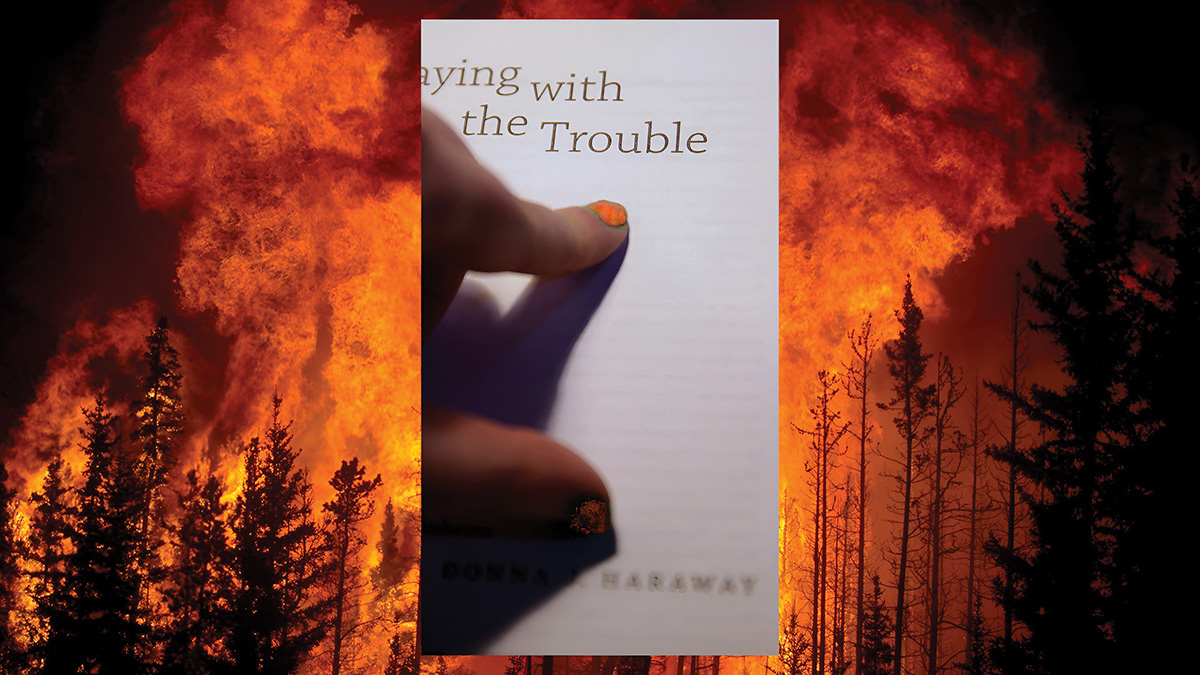

S()fia Braga, Matthias Pitscher, Fabricio Lamoncha
ASMR for Earthly Survival
Vidéo expérimentale | mp4 | | 10:0 | Italie, Autriche | 2020
Soft voices and soothing sounds will take the audience on a sensory audiovisual journey through a dystopian near future. The resulting work is based on the collaborative composition and exploration of intimate fears and tribulations related to current climate change narratives, and represented through the implementation of the experimental ASMR methods presented at the “ASMR for earthly survival” workshop held by the artists. “ASMR for Earthly Survival” explores the potential of ASMR (Autonomous Sensory Meridian Response) as a tool for the creation of intimate science fiction storytelling narratives.
S()fia Braga is an Italian transmedia artist who lives and works between Vienna and Linz, conducting artistic research that combines digital and post-digital practices. Her work is focused on exploring new technologies to create speculative fabulations that delve into themes such as transhumanism, human and non-human collaboration and non-human agency. S()fia’s identity constantly changes and goes hand in hand with the narratives she creates: over the last years she has been an artist, a transhumanist entrepreneur, an AI auteur, a cyberstalker, and has mutated several times into a monstrous creature. Matthias Pitscher works as an artist, designer, meditation teacher, barista, researcher, entrepreneur and bad influencer. The artifacts he produces deal with the constant changes we face in our transition to a technologically connected society. Analytical yet humorous, he demonstrates how digital media transforms our perception of reality. Fabricio Lamoncha is an artist, designer and researcher from Spain, currently based in Austria. Since 2018 he is lecturer and PhD researcher at the Kunstuniversität Linz. Also member of the Art|Sci Center at UCLA (Los Angeles) and co-founder and organizer of the Leonardo Laser Talks Linz. His practices explore the entanglements of media ecology and bioethics.

Marco Brambilla
Civilization (MEGAPLEX)
Vidéo | dv | couleur | 3:22 | Italie | 2008

Sebastian Brameshuber
Of Stains, Scrap & Tires
Documentaire | 16mm | couleur | 20:0 | Autriche, France | 2014
Of Stains, Scrap & Tires is a calm, documentary miniature that chooses the auto export business of three young Nigerians in the Erzberg region as a point of association and departure for formulating something more fundamental about the first and third worlds, movement and standstill, business, space, and freedom.
Sebastian Brameshuber studied scenography at the Vienna University of Applied Arts and contemporary arts at Le Fresnoy - Studio National des Arts Contemporains in France. His earlier films are in the tradition of Austrian avant-garde cinema and examine the nature of the moving image. In his documentary works, he maintains a strong interest in form, while emphasising human relationships and sociopolitical issues. His work has been presented at major film and media art festivals such as the Berlinale, Viennale, FID Marseille, BAFICI, Karlovy Vary Film Festival, Sarajevo Film Festival, EMAF Osnabrueck, Impakt Utrecht, Media Art Friesland, etc. He currently lives and works in Vienna.


Robert Bramkamp, Susanne Weirich
Die Ausstattung der Welt
Doc. expérimental | 0 | couleur | 99:0 | Allemagne | 2023


Nicolás Branca
Las Nuevas Aventuras de Tom y Jerry
Fiction expérimentale | dv | couleur | 17:50 | Uruguay | 2005
La relation qu'entretiennent Tom et Jerry n'est pas claire. Sont-ils amis, ennemis, ou forment-ils un couple ? Peu importe, la vidéo montre l'amour, la haine, la tristesse et la tendresse qui existent dans leur relation si particulière.
Nicolas Branca Rosse est un artist visuel, un photographe, un artiste vidéo et un réalisateur né en 1972 à Montevideo en Uruguay. Parmi ses oeuvres les plus récentes on trouve "OVNI", une fiction de 21 mn, réalisée en 2002-2003. "Panamericano" est une oeuvre expérimentale, une boucle d'une minute exposée au Centre Culturel d'Espagne de Montevideo en 2004. En 2005 il fait "Victima", une oeuvre expérimentale de trois minutes exposée au Bar Tasende, une entreprise artistique. Il réalise également "Las Nuevas Aventuras de Tom y Jerry" (les nouvelles aventures de Tom et Jerry), une vidéo expérimentale de 18 mn montrée au Festival de Cine y Video Latino de Buenos Aires en 2005 où elle remporte le premier prix dans la catégorie "expérimental". En 2006, il est sélectionné pour l'exposition Zemos98 au Festival ACCION PARALELA et il réalise "El Teorico", une installation vidéo composée d'une boucle de 2 mn et exposée au Centre Culturel Ex Teresa, à Mexico au Mexique.

Martin Brand
Causality and Meaning
Vidéo expérimentale | mov | couleur | 9:17 | Allemagne | 2020
"Causality and Meaning" consiste en une séquence rapide de 635 fichiers images, qui - isolés sur fond blanc - montrent des logos, des symboles, des graphiques, des mèmes Internet, des illustrations et des images de produits. Sur le plan du contenu, cette œuvre questionne des sujets tels que le transhumanisme, la culture de droite liée à Internet et aux mèmes, le suprémacisme blanc, l'antiféminisme et le mouvement pour les droits des hommes, la culture machiste et le chauvinisme, des stéréotypes de masculinité ininterrompus, la consommation néolibérale et la culture du divertissement axée sur la violence. Sur le plan sonore, on peut entendre une composition du tromboniste et musicien expérimental originaire de Cologne Matthias Muche, accompagnée de mots du compositeur britannique Anthony Moore. Les sons produits par le trombone, combinés avec la voix masculine de Moore, distordue et parfois incompréhensible, semblent commenter la séquence d'images ou même en illustrer le contenu; parfois les sons y opposent à leur manière une résistance et s'affirment comme une partie autonome de l'œuvre.
Martin Brand est né à Bochum (Allemagne) en 1975, et a étudié l'art et la philologie allemande à Bochum et Dortmund (Allemagne) jusqu'en 2002. Il vit et travaille à Cologne. Dans son œuvre, il traite de questions sociales et politiques, qu'il explore par le film et la photographie. Le point de départ est souvent un phénomène qu'il trouve dérangeant, irritant et déstabilisant, mais qui, dans le même temps, l'attire et le fascine. À partir de la surface, il tente de révéler liens et structures, de regarder derrière la façade et, finalement, de confronter le spectateur à sa contrepartie, le mettant au défi d'une analyse critique. Des thèmes tels que la jeunesse et les subcultures, la quête d'identité, la violence, les stéréotypes de genre, le fait de s’orienter d’après des modèles, l'influence des médias et de la publicité, les hiérarchies et mécanismes de groupe sont au cœur de son travail. Ses œuvres ont été présentées dans de nombreuses expositions et festivals et font partie de diverses collections d'art telles que la collection Goetz à Munich (Allemagne), celle du musée Ostwall à Dortmund (Allemagne) ou celle du Hessisches Landesmuseum Darmstadt (Allemagne). Il a reçu des bourses de projet et des bourses d’étude, et a été récompensé à plusieurs reprises pour son travail.


Charlotte Brathwaite
FORGOTTEN PARADISE: DREAM THE OTHER SIDE OF THE RIVER
Vidéo expérimentale | hdv | couleur | 13:18 | Sénégal | 2022
Rien ne se perd, rien ne se crée – tout se transforme. L’héritage de l’esclavage dépouille ceux pris dans son cauchemar étouffant de la plénitude d’une vie. A travers des images tantôt en mouvement, tantôt statiques, la réalisatrice Charlotte Brathwaite en collaboration avec le photographe Malick Welli imagine les rêves et les cauchemars de l’érudit fait esclave Omar ibn Said. A travers des projections en mouvement et des photographies en grand format, l'œuvre se déploie comme une mélodie fantôme du cinéma. Elle fait le lien entre l’esprit volé de Said et la présence vivante de ses ancêtres, traversant l’océan, traversant le temps et l’espace. FORGOTTEN PARADISE transforme les ténèbres de la captivité en lumière : celle de la liberté, et d’une famille aimante.
Creator/Director CHARLOTTE BRATHWAITE is the recipient of a Doris Duke Award, Art Matters Award, Creative Capital Award, Pew Center for Arts & Heritage Fellowship Grant, a United States Artist Fellowship, multiple Map Fund Awards and the Princess Grace George C. Wolfe Award amongst others. Brathwaite’s genre-defying work illuminates the realities and dreams of marginalized people; people whose stories have been silenced, disappeared, and ignored. Dealing with subject matter from the historical past to the distant future, her work brings to light issues of social justice, race, power, and the complexities of the human condition. A director of classical texts, multimedia, site-specific works, dance performances, operas, concerts, film, and installations - her trans-disciplinary inquiry manifests in spectacles of color and music. Her works – presented across the globe from North and South America, Europe, Africa, Asia and Australia – live in the deep time of aural/oral history and create an immersive experience for audience and performer alike which offers new perspectives in both form and content. MFA from Yale School of Drama and BA Amsterdam School for the Arts (the Netherlands). As an educator, she has taught and mentored at several institutions including the University of Fortaleza (Brazil), Barbados Community College (the Caribbean), Massachusetts Institute of Technology, Amherst College, New York University, Stanford University amongst others. www.charlottebrathwaite.com ________________ Malick Welli is a Senegalese visual artist who lives and works in Dakar, Senegal. His work addresses themes of duality, spirituality, history and the restitution of memory, pedagogy and displaced identity. Welli is interested in the convergence of religion and material influences, economics and power dynamics, and how these elements shape visual culture. There's a quest for ecology and interdependence, and how seemingly independent events coincide and influence each other. Welli contrasts these material concerns of the community with individual spiritual needs. Welli's work has been collected and exhibited worldwide: "In Brilliant Light" at the Afrika Museum in Berg en Dal and MuseumVolkenkunde in Leiden, Netherlands (2023-2024); "Insistent Presence: Contemporary African Art from the Chazen Collection" at the Chazen Museum of Art, Wisconsin, USA (2023); 1.54 Contemporary Art Fair, New York, USA (2023); "Sur le fil... " at 19M in Paris (2023) ; 1-54 African Contemporary Art Fair , Marrakech, Morocco (2023) ; Art x Lagos, Nigeria (2022), "Lightness of Being" a solo exhibition at Galerie Atiss Dakar (2022) ; "Les Invincibles" at the Biennale de Dakar (2022) ; Blackstar Film Festival, Philadelphia, USA (2022); 1- 54 Contemporary African Art Fair, New York (2021); EXPO CHGO, Chicago, USA (2019); Cairo Biennale, Egypt (2019); "Saint-Louis to St Louis", Barret Barrera projects, Missouri, USA (2019); AKAA: Also Known As Africa fair, Paris, France (2018); "Pour les Noirs et pour les Blancs , Hierro Desvilles Gallery, Lille, France" (2016).